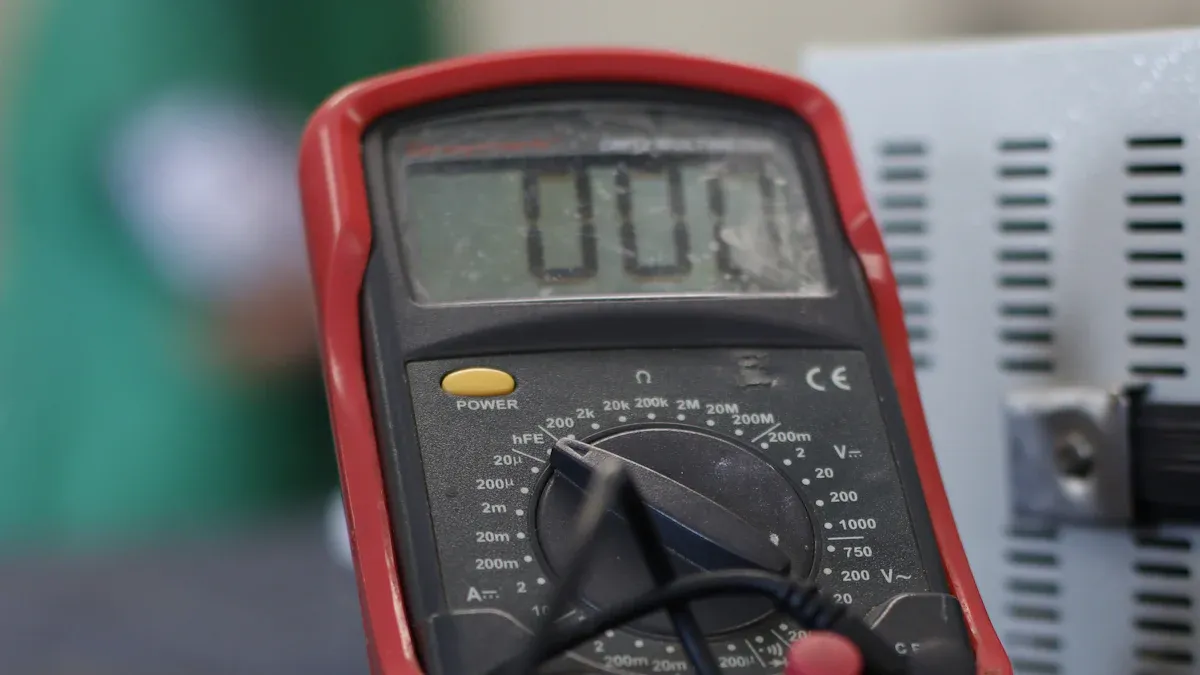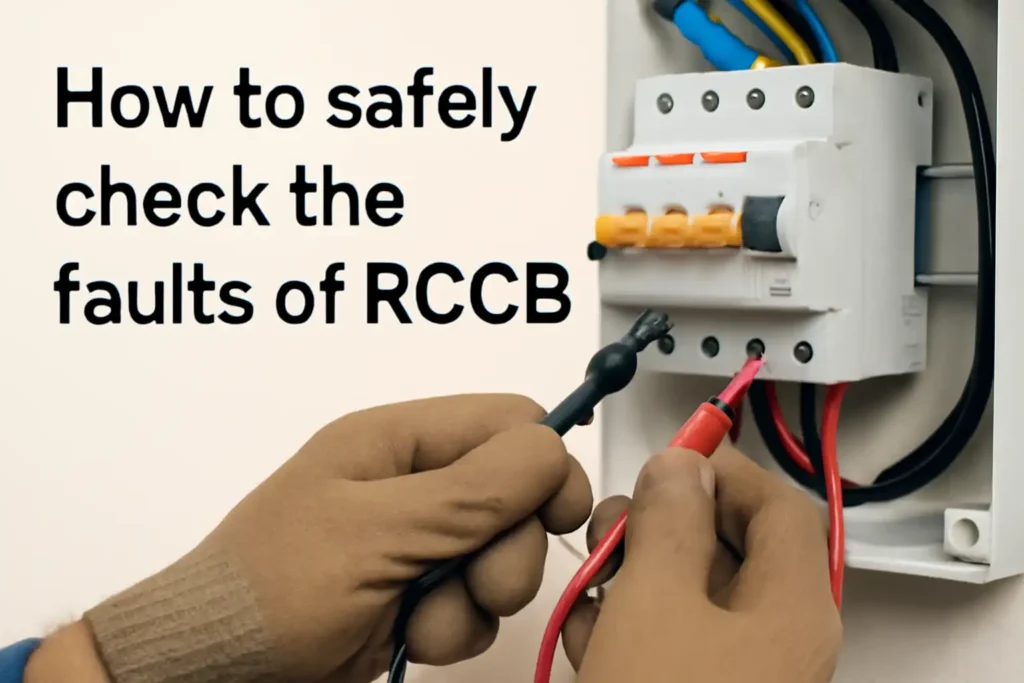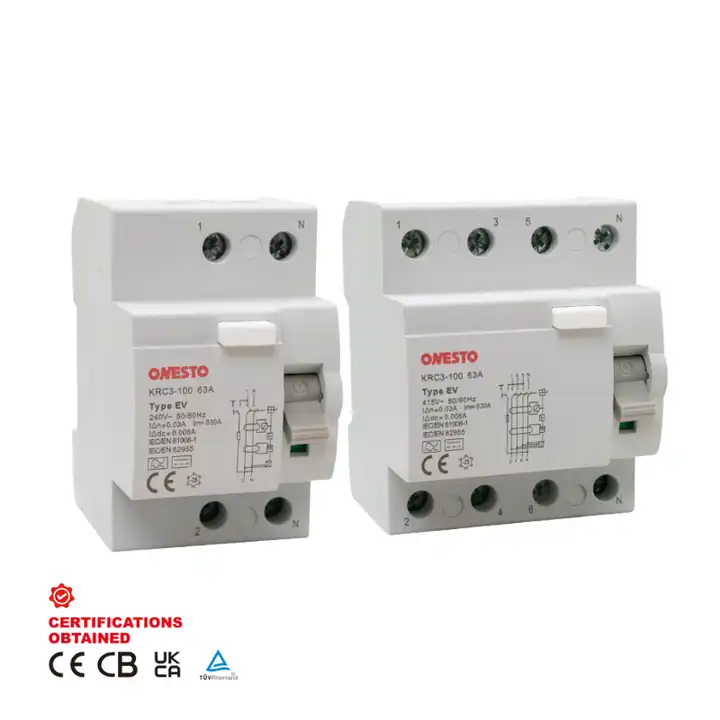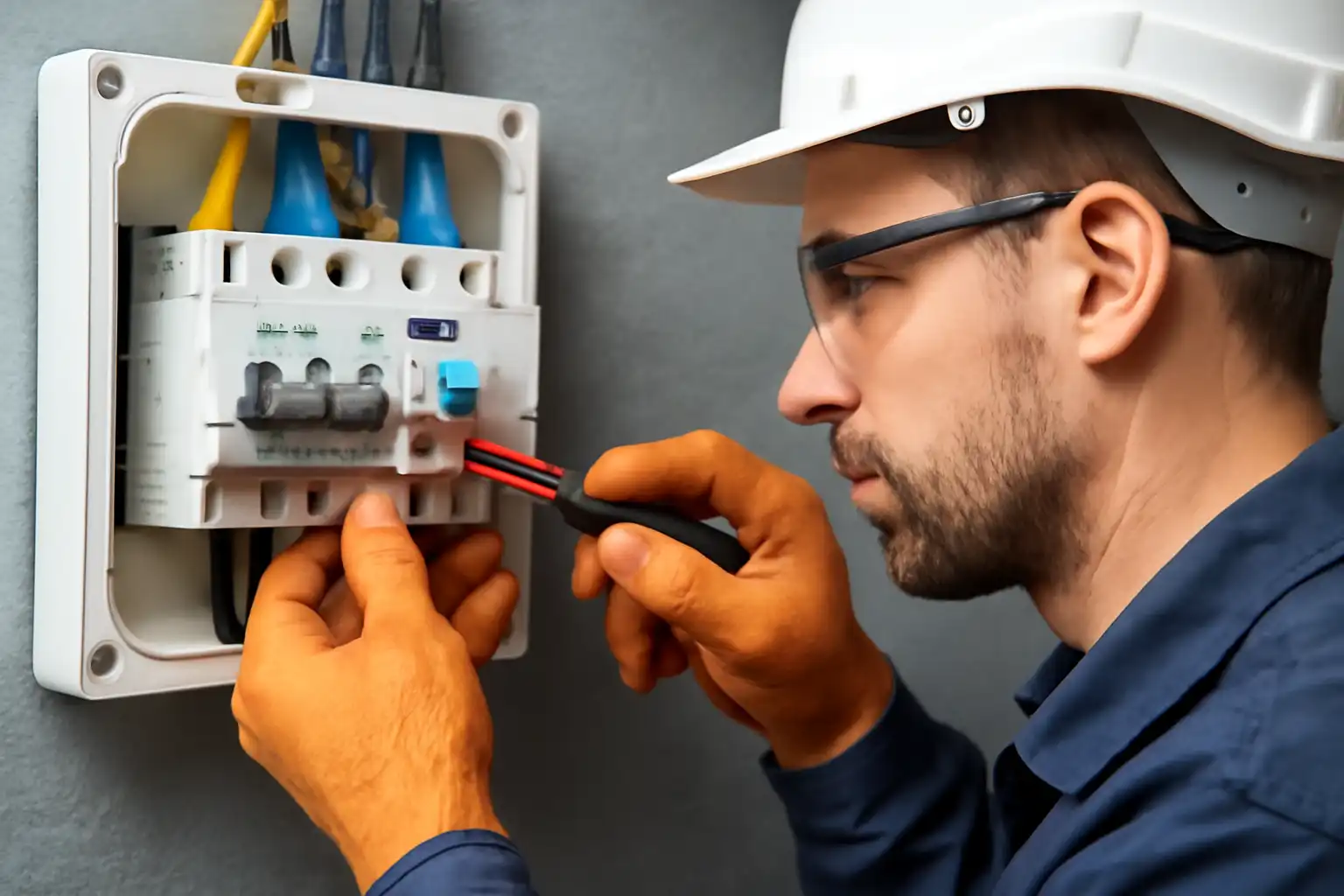A Residual Current Circuit Breaker (RCCB) keeps you safe from electrical dangers by finding current leaks and turning off the power. This action stops shocks and lowers the chance of fires from bad wiring or devices. To ensure your home remains safe, it’s essential to check for RCCB malfunction regularly. If the RCCB has problems, it might not protect you effectively. Therefore, it’s important to test and check it carefully. Taking safe steps can help you spot problems early and maintain your safety.
Key Takeaways
- Press the test button on your RCCB every month. This checks if it works well and keeps your home safe from electrical problems.
- Look at the RCCB and wires for damage or loose parts. Check for signs of overheating to find problems early.
- Use tools with insulation and wear safety gear while testing. This helps avoid shocks or getting hurt.
- Call a trained electrician if the RCCB has ongoing issues. Also, call them if it doesn’t turn off during testing.
- Teach your family about electrical safety and why the RCCB is important. Make sure they know what to do in emergencies.
How to Check for RCCB Malfunction Safely
Inspect the RCCB and surrounding wiring
Look closely at the RCCB and nearby wires. Check for loose wires, damaged cables, or burnt spots. These can mean overheating or harm. Make sure the RCCB is firmly attached and nothing blocks it. If you smell something burning, it could be a big problem. Fix these issues quickly to stay safe.
Tip: Use a flashlight to see dark areas better and stay safe.
Test the RCCB using the test button
RCCBs have a “Test” button, often marked “T.” Press it to create a fake fault. A working RCCB will shut off the power. This shows its parts are working well. If it doesn’t trip, it might need replacing.
Here’s a simple table for RCCB tests:
| Test Type | What It Does |
|---|---|
| RCCB Test Button Check | Confirms the RCCB works before testing further. |
| Tripping Time Test | Checks how fast the RCCB reacts to a fault. |
| Non-Trip Test (½ I Test) | Makes sure the RCCB doesn’t trip at half its rated current. |
| Trip Test (I Test) | Tests if the RCCB trips at its rated current within 300ms. |
| 5I Trip Test | For RCCBs rated 30mA or less, it should trip within 40ms at 5 times the rated current. |
| RCCB Ramp Test | Gradually increases current to find the trip point. |
| Earth Fault Loop Impedance Test | Checks low impedance for fault currents, showing RCCB works during faults. |
Note: Test the RCCB monthly to keep it reliable.
Perform a manual trip test with a connected load
Do another test with a plugged-in device, like a lamp. Turn on the lamp and press the RCCB’s test button. The RCCB should trip and turn off the lamp. This shows it can find faults and stop power safely.
If the RCCB doesn’t trip, it might not protect you from electrical dangers. Call a licensed electrician to check or replace it.
Warning: Only use devices in good condition for testing to avoid wrong results.
Check for visible damage or overheating signs
Look closely at the RCCB for any damage. Check for cracks, melted spots, or discoloration on its surface. These could mean it has overheated or been stressed. Also, inspect the nearby wires. Burn marks or torn cables might show electrical problems affecting the RCCB.
If you smell something like burning plastic, it’s a warning of overheating. Do not touch the RCCB directly in this case. Turn off the main power and call an electrician right away.
Tip: A magnifying glass can help you see small cracks or damage.
Checking regularly helps you find problems early and avoid bigger issues. This is important because physical damage can stop the RCCB from protecting your home properly.
Use a multimeter to check for current leaks (if needed)
A multimeter is useful for finding current leaks in RCCBs. Set the multimeter to measure AC current. Place the probes on the RCCB’s input and output points. A good RCCB will show little or no current leakage. If the reading is too high, there might be a problem.
Here are some tips for using a multimeter:
- Make sure the multimeter is set up correctly before testing.
- Use probes with insulation to stay safe from shocks.
- Read the multimeter’s guide for steps on checking leakage current.
Note: Checking leakage current helps you see how well the RCCB works. Guides on leakage current testing can give more details.
Using a multimeter gives a deeper look at RCCB issues. It can find hidden problems that you might miss during a visual check. If you’re unsure about the results, ask an electrician for help.
Common Reasons for RCCB Malfunctions
Moisture or water ingress
Water can harm how an RCCB works. Moisture in the device or wires can cause short circuits or false trips. This often happens in wet places or near water leaks.
To stop this, check for leaks near your electrical panel. Make sure the RCCB and its cover are sealed tightly. If you see dampness, dry it quickly and fix the leak.
Tip: Use waterproof covers for RCCBs in wet areas to stay safe.
Faulty or damaged electrical appliances
Broken appliances can make the RCCB act up. For example, bad wiring or broken parts in devices can cause false trips. A study in Valencia found RCCBs often tripped because of faulty appliances. These devices caused problems in circuits, leading to unnecessary shutdowns.
To prevent this, check your appliances often. Look for broken cords, exposed wires, or odd behavior like flickering lights. Fix or replace damaged devices right away.
- Common problem devices include:
- Old or poorly kept appliances.
- Devices with broken power cords.
- Faulty electronics like microwaves or washing machines.
Note: If an appliance causes trouble, unplug it and test the RCCB again.
Loose or improper wiring connections
Loose or bad wiring can mess up electricity flow, making the RCCB trip. This can happen during setup or as wires wear out. Bad wiring can also overheat and damage the RCCB.
Check all wires near the RCCB. Make sure they are tight and not worn out. Look for frayed insulation or exposed wires. If you find a problem, turn off the power and fix it.
Warning: Don’t fix wires without the right tools or skills. Call an electrician if unsure.
Wear and tear from getting old
As time passes, your RCCB can wear out. Its parts may weaken, making it harder to find faults. This often happens in older systems exposed to heat, dust, and heavy use.
To check for aging problems:
- Look at the RCCB’s casing for cracks or color changes. These show wear.
- Press the test button to see if it works right. If it doesn’t trip, it might not work well anymore.
- Listen for strange sounds like buzzing or clicking when it runs. These could mean damage inside.
Tip: Replace RCCBs older than 10 years, even if they seem fine. Old ones may not work properly.
Checking regularly helps you find aging issues early. If you think the RCCB is too old, ask an electrician to check it.
Damage from power surges or overloads
Power surges and overloads can harm your RCCB. Surges happen during storms or when big devices turn on. Overloads occur when too many devices use one circuit. Both can strain the RCCB and make it less effective.
Here’s how to keep your RCCB safe:
- Use surge protectors to block sudden voltage spikes.
- Don’t overload circuits; spread devices across outlets.
If your RCCB trips often after a surge or overload, it might be damaged. Test it with the button and check wires for overheating signs.
Warning: Don’t reset the RCCB again and again without fixing the problem. This can cause more harm.
Protecting your RCCB keeps it working and shields your home from electrical dangers.
Safety Tips for Testing RCCB Faults

Turn off the main power supply before starting
Always switch off the main power before testing an RCCB. This step stops electrical shocks and keeps you safe. Find the main switch on your panel and turn it “off.” Check that all devices connected are powered down.
⚠️ Important: Never skip this step. Live circuits can cause injuries or damage.
Turning off the power makes testing safer. It also prevents more harm to the RCCB during checks.
Use insulated tools and wear protective gear
Insulated tools and safety gear lower the risk of electrical harm. Tools like rubber-handled screwdrivers stop electricity from reaching your hands. Safety gear, such as gloves and glasses, protects you from sparks or debris.
Here’s a table showing why protective equipment matters:
| Evidence Type | Description |
|---|---|
| OSHA Rules | Stresses using safety gear and safe practices to avoid electrical hazards. |
| NFPA 70E Guidelines | Offers tips for identifying risks and staying safe during electrical work. |
| PPE Benefits | Explains why gloves, glasses, and insulated tools are key to avoiding injuries. |
💡 Tip: Use tools with rubber grips and wear voltage-rated gloves for extra safety.
These steps help you test the RCCB safely without risking injury.
Avoid testing in wet or damp conditions
Testing an RCCB in wet areas is dangerous. Water carries electricity, making it unsafe to work near moisture. Check for leaks or damp spots around your panel before testing.
Dry wet surfaces completely and wait until the area is dry. Don’t test during rain or in humid places.
⚠️ Warning: Never touch electrical parts with wet hands. This can cause serious harm.
Keeping the area dry protects you and the RCCB. It also ensures accurate test results.
Make sure the area is bright and safe to work
Good lighting and a tidy workspace are very important. Dim light can cause errors, like mixing up wires or missing damage. A messy or shaky area can lead to accidents.
Steps for a safe workspace:
- Use bright lights: If it’s dark, use a flashlight or lamp. Avoid shadows that block your view.
- Keep the area clear: Move items away from the electrical panel. This helps prevent tripping or dropping tools.
- Stand on a steady surface: Work on dry, flat ground. Don’t use wobbly or slippery platforms.
Tip: A headlamp is great for small spaces. It frees your hands and keeps the area well-lit.
A clean, bright workspace makes the job easier and safer. Always prepare your area before starting any electrical work.
Get expert help if you’re unsure
Working with electrical parts can be risky if done wrong. If you’re not sure about a step, call a licensed electrician. Experts have the skills and tools to fix problems safely.
When to ask for help:
- Confusing test results: If the RCCB doesn’t work as it should, an expert can figure it out.
- Wiring problems: Tangled or loose wires can be hard to fix without training.
- Ongoing issues: If the RCCB keeps tripping or won’t reset, it needs professional care.
Warning: Don’t try to fix or replace an RCCB unless you’re trained. Doing it wrong can cause injuries or more damage.
Calling a professional ensures the job is done right and safely. It also gives you confidence that your electrical system is in good shape.
Preventive Measures to Avoid RCCB Malfunctions
Plan regular checks and maintenance
Regular checks keep your RCCB working well. Testing shows if it’s protecting you properly. Maintenance experts can find problems early, saving money and avoiding bigger issues. This ensures your RCCB stays dependable.
Why regular checks are important:
- Find problems early: Experts spot issues before they get worse.
- Stay protected: Testing proves the RCCB will trip when needed.
- Save money: Fixing small issues costs less than major repairs.
Make a habit of testing your RCCB. Press the “Test” button every month for a quick check. For detailed inspections, hire an electrician once a year.
Tip: Write down test dates to stay on track.
Get a licensed electrician for installation
Proper setup prevents RCCB problems. Licensed electricians know how to install it safely. They follow rules and make sure wires are secure.
Bad installation can cause loose wires, overheating, or false trips. These problems make the RCCB less effective. Always hire a pro for new installations or upgrades.
⚠️ Important: Don’t install an RCCB yourself unless you’re trained.
Use good-quality appliances and parts
Cheap devices can harm your RCCB. Faulty items may cause false trips or damage it. High-quality appliances are safer and create fewer electrical problems.
Pick appliances with safety labels. Use strong parts like surge protectors and insulated wires. These help prevent overloads and surges that can hurt your RCCB.
💡 Tip: Replace broken or old devices quickly to keep your system safe.
Keep the RCCB safe from water, dust, and damage
Protecting your RCCB from harm helps it work well. Water, dirt, or damage can make it stop working. Follow these easy steps to keep it safe:
- Place the RCCB in a dry spot: Pick a location far from sinks, bathrooms, or rainy areas. If it must be near water, cover it with a waterproof case.
- Clean around it often: Dust can block parts inside the RCCB. Use a dry cloth to wipe away dirt regularly.
- Avoid hitting or damaging it: Don’t store heavy things near the RCCB. Bumps or drops can break its case or loosen wires.
💡 Tip: Lock the panel cover to stop kids from touching it or causing damage.
These steps help your RCCB last longer and keep your home safe.
Teach your family about electrical safety
Teaching your family about electricity helps prevent accidents. It also ensures they know what to do in emergencies. Many people don’t know basic safety rules, which can lead to danger.
Here’s how you can help:
- Explain what the RCCB does: Tell them it stops shocks and fires. Show them how to press the “Test” button to check it.
- Teach safe use of devices: Remind them to unplug items when not in use. Warn them not to overload outlets.
- Share emergency steps: Make sure they know how to turn off the main power if something goes wrong.
A study showed important facts about home electrical safety:
| Evidence Type | Description |
|---|---|
| Awareness Level | Most people know about electrical dangers |
| Knowledge Gap | Many don’t understand safety steps or emergency actions |
| Uncertainty | People feel unsure about handling electrical problems |
This shows why teaching safety is so important. Filling these gaps makes your home safer.
⚠️ Important: Remind kids often not to touch outlets or devices without an adult.
Teaching your family helps them stay safe and avoid electrical problems.
Testing your RCCB often makes sure it works well and keeps your home safe. Check it every month to find problems early. This also confirms the RCCB trips when it should. After events like power surges or wiring updates, testing becomes even more important for safety.
Always follow safety rules while testing to stay safe. Turn off the main power first. Use tools with rubber handles and work in a dry, bright space. If problems don’t stop, call a licensed electrician. Experts have special tools, like leakage current meters, to find and fix issues properly.
💡 Tip: Test your RCCB regularly to keep your family safe from electrical dangers.
💡 Tip: ONESTO is a professional RCCB manufacturer that provides high-quality products
FAQ
What does the RCCB test button do?
The test button makes a small current imbalance to mimic a fault. Pressing it should make a working RCCB trip and shut off power. This shows the RCCB can find faults and keep your home safe.
Tip: Check the RCCB every month to ensure it works well.
How often should you test an RCCB?
You should test the RCCB once a month. Press the test button to see if it trips properly. Regular checks keep the RCCB ready to stop electrical dangers.
Note: Test more often after power surges or repairs.
Can you fix a faulty RCCB yourself?
No, fixing an RCCB needs expert skills. Trying to repair it without training can cause harm or more damage. Always call an electrician to fix RCCB problems safely.
⚠️ Warning: DIY fixes on electrical devices can be very risky.
Why does an RCCB trip frequently?
Frequent tripping may mean broken appliances, loose wires, or moisture nearby. Check these areas carefully. If the problem doesn’t stop, ask an electrician to find and fix the issue.
💡 Tip: Unplug devices one at a time to find the problem.
What should you do if the RCCB doesn’t trip during testing?
If the RCCB doesn’t trip when tested, it might be broken. Turn off the main power right away and call an electrician to check or replace it.
⚠️ Important: A broken RCCB cannot protect you from electrical dangers.
The following information may be of interest to you
What Are Residual Current Circuit Breakers and How Do They Work
Top 8 Residual Current Circuit Breaker Brands for Home Safety
How to Resolve RCCB Tripping Problems at Home
How to choose a household residual current circuit breaker





